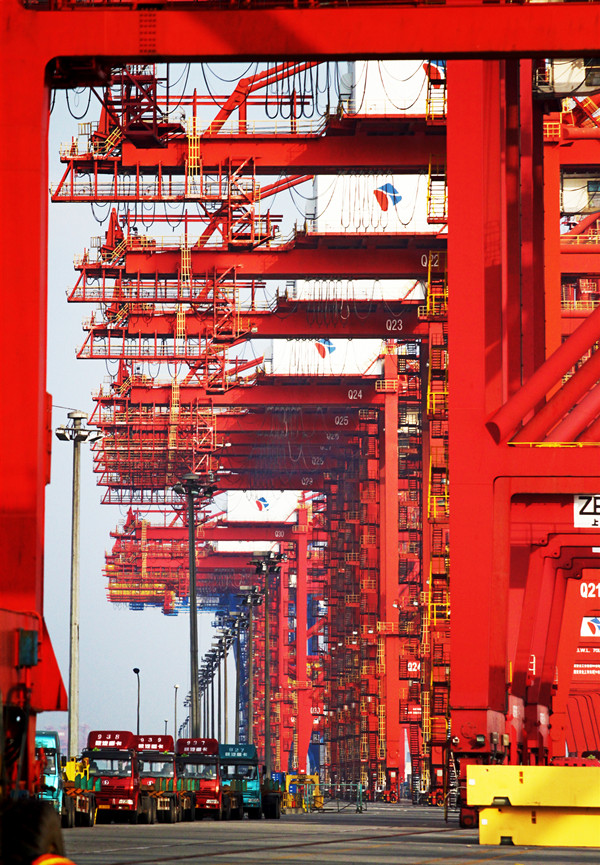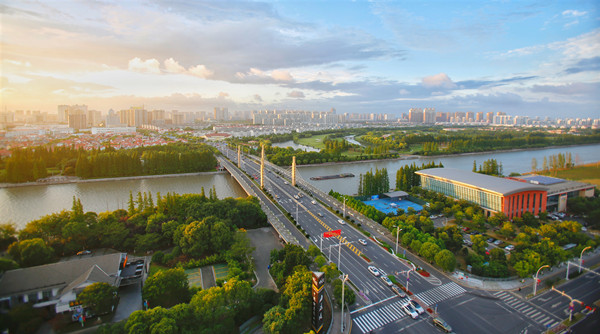More steps to boost foreign trade
Infrastructure, new business formats, tech, services will be in focus in 2021-25
China will encourage its pilot free trade zones (FTZs) and comprehensive bonded areas to build global supply warehouses and transportation hubs during the 14th Five-Year Plan period (2021-25), in order to spur new forms and models of foreign trade, a government official said on Tuesday.
With China and its partners pushing for the Regional Comprehensive Economic Partnership agreement to become effective next year and preparing to join the Comprehensive and Progressive Agreement for Trans-Pacific Partnership, it is vital for the country to establish such facilities in these zones, as well as the Hainan Free Trade Port, said Li Kuiwen, director-general of the General Administration of Customs' statistics and analysis department.
The new forms and models of foreign trade refer to a range of businesses like cross-border e-commerce, market procurement, comprehensive foreign trade service providers, bonded maintenance, offshore trade and overseas warehouses, according to information from the GAC and the Ministry of Commerce.
Addressing a meeting to introduce the administration's plan for the 2021-25 period, Li said the government will encourage the use of new technologies and tools to empower foreign trade, support the sound growth of integrated service providers, enhance bonded maintenance business, advance offshore trade and facilitate platforms for specialized services.
Under the GAC's five-year plan, the government will assist companies to conduct bonded area research and development, product testing, repair and remanufacturing businesses within FTZs and comprehensive bonded areas, and introduce new forms of Customs clearance facilitation measures for companies engaged in certain businesses like cross-border e-commerce, procurement trade and overseas warehouses.
In addition to accelerating the negotiation process involving Customs issues of bilateral and multilateral free trade deals, like the China-Japan-Republic of Korea free trade agreement, the administration will advocate companies to strengthen and expand general trade, increase the proportion of processing trade in the nation's foreign trade, guide companies to boost added value, and enhance companies' negotiation strength and bargaining power in the coming years.
China's general trade reached 11.19 trillion yuan ($1.73 trillion) in the first half of this year, up nearly 31 percent year-on-year, accounting for almost 62 percent of the country's total foreign trade value, the administration said.
Imports and exports of processing trade climbed 15.8 percent year-on-year to 3.89 trillion yuan, taking up 21.5 percent of China's foreign trade volume.
As China-Europe freight train services have shown great advantages and become a force in stabilizing trade between China and partners participating in the Belt and Road Initiative, the GAC will strengthen cooperation with Customs authorities in other countries. This should support the upgrade of the railroad services' domestic and foreign assembly centers from points to hubs, in order to move more goods and create new jobs, Li said.
In the first half of the year, 7,377 China-Europe freight trains were operated and 707,000 standard packing boxes of goods were shipped, up 43 percent and 52 percent year-on-year, respectively.
The comprehensive loaded container ratio hit 98 percent, according to data released by national railway operator China State Railway Group Co Ltd.
Customs figures showed that China's imports to, and exports from, economies related to the Belt and Road Initiative were worth 209.78 billion yuan in all, in terms of railway transport in the first half, up 43 percent year-on-year.
China-Europe freight trains have provided alternatives in transport, thus strengthening the global fight against the COVID-19 pandemic that disrupted international air and maritime transport, said Luo Renjian, a researcher at the National Development and Reform Commission's Institute of Transportation Research.
The varieties of products carried by the freight trains have been expanding, from laptops and related parts at the beginning to more than 50,000 items nowadays, including automobiles, chemical products, mechanical and medical supplies, as well as all kinds of goods from online retailers, data from the GAC showed.









